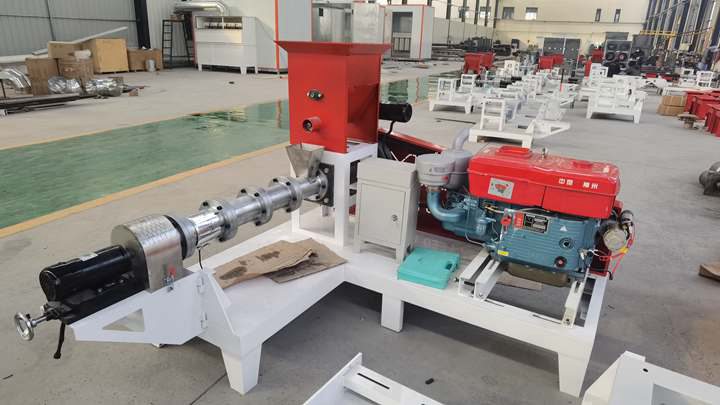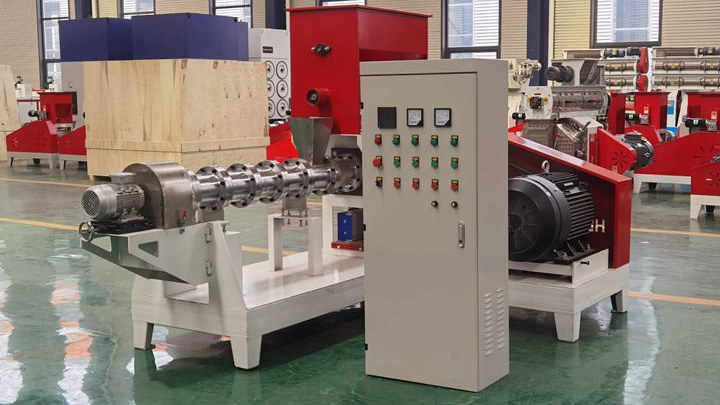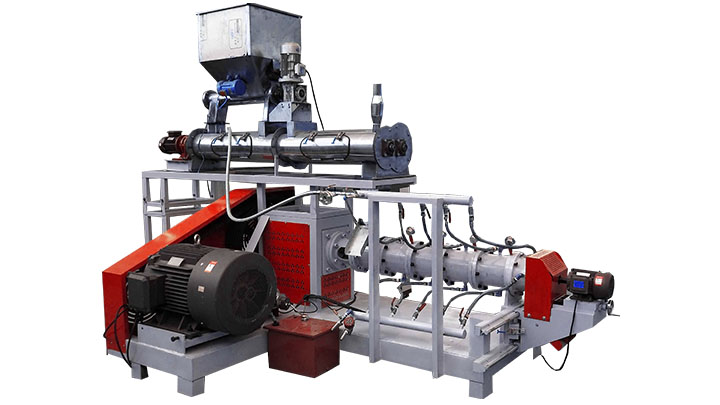.jpg)
Tilapia Fish Food Floating Feed Extruder Machine , Find Complete Details about Tilapia Fish Food Floating Feed Extruder Machine,Feed Extruder Machine,Floating Fish Feed Extruder Machine,Animal Feed Extruder Machine from Feed Processing Machines Supplier or Manufacturer-Changzhou Farthest Machinery Co., Ltd.
.jpg)
Before the tilapia body reaches 150 grams, the protein content should be 32%~35% of the feed, daily feeding amount is 3%~5% of tilapia total weight. Rich water cultivation can also be used, relying on animal waste to cultivate biological feed fish, generally spread manure once a week, 100kg-150kg each Mu(about 666m3).

Dry type fish feed extruder is the the specialist contributing to high quality floating fish feeds without steam conditioning of the raw material. Different molds are available to make pellets of different diameters (0.9-15mm) and shapes.

Fish Feed Extruder - Food Machinery Direct Sales Manufacturers200-300kg/h. Dimensions. 18*1.3*2.4. Our factory produces a complete set of production equipment for fish feed, which

How to make tilapia fish feed - Fish Feed Extruder Machine Price Feeding is as follows: twice a day, two periods: 8 a.m. to 9 a.m. and 3 p.m. to 4 p.m. Catch 30 to 50 fish every 15 to 20 days to calculate the average weight to analyze the growth of tilapia fish, which helps adjust feeding speed to help the fish grow healthily.
.jpg)
Application of extruder pellet machine. 1. Aquatic feed pellet for fish, catfish, tilapia, tilapia fish, shrimp, crab, etc. Both floating and sinking feed pellets. The floating time can be adjusted by the different puffing degree.Main use: 2. Pet food pellet for pets like cat, dog, pet bird, 3. Other animals feed pellet, like frog, fox, rabbit
.jpg)
4.According to your requirement and production scale,pet food extruder can be classified into dry type machine and wet type machine. accoriding to your needs , we can give you the best recommedation . 5.It can produce different shapes feed for fish, dog, cat etc. Raw Materials
.jpg)
What is Tilapia Fish Feed Extruder Ornamental Fish Feed Extruder, fish manufacturers & suppliers on Video Channel of LimaFeedPelletizer.com.

Fish Feed Extruders with Various Production Capacities. Our Fish Feed Extruders are with improved qualities and affordable cost. It includes: dry type single screw extruder, wet type single screw extruder, double screw extruder, ring die fish feed pellet mill, and diesel engine extruder machine. We can satisfy different production requirements.
♦ Extrusion by fish feed extruder The fish feed extruder is a long barrel with a screw auger inside which is specially designed to subject feed mixtures to high heat and steam pressure. When feed exits the die at the end of the barrel, trapped steam blows off rapidly, the soft warm pellets expand, and a low density floating pellet is produced.
.jpg)
Let’s take a look at the feed formula of tilapia: (1) Rice bran 45%, bean cake 35%, silkworm chrysalis powder 10%, secondary powder 8%, bone meal 1.50%, salt 0.50%, appropriate amount of “biological fattening essence”, “high-efficiency health-care growth-promoting liquid” 10 catties, feed coefficient 2.1.
.jpg)
model: dl56 / dl65 / dl70 / dl80 / dl90 / dl95 / dl120 / dl140 / dl160

Feeding is as follows: twice a day, two periods: 8 a.m. to 9 a.m. and 3 p.m. to 4 p.m. Catch 30 to 50 fish every 15 to 20 days to calculate the average weight to analyze the growth of tilapia fish, which helps adjust feeding speed to help the fish grow healthily. Feeding speed also depends on the fish’s diet.
.jpg)
1/11/2016 · Tilapia and Shrimp Feed Making in Brazil,Aquafeed making in Brazil,Tilapia feed,shrimp feed,feed formulation,fish feed extruder. Brazil is becoming one of majors aquaculture producers in worldwide, with significant advantages including the coastline of 8,500 km, 12% of the world’s freshwater reserves, tropical and subtropical

When the water temperature is below 15℃ or above 32℃, farmers also need to reduce feeding or stop feeding, which contributes to fish digestion, good water quality and feed cost controlling. In high temperature season, feed with high protein content is disadvantageous to fish digestion, resulting in fish disease.